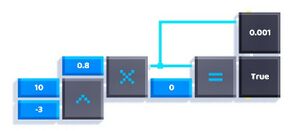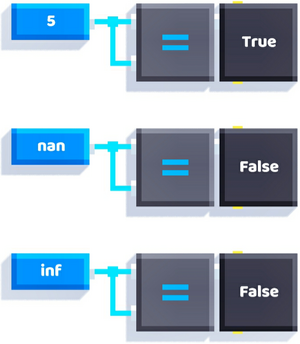Equal Numbers: Difference between revisions
-u ndefined- (talk | contribs) m (Link related articles) |
(Standartise description among all Equal X pages) Tags: Mobile edit Mobile web edit Advanced mobile edit |
||
| (One intermediate revision by one other user not shown) | |||
| Line 8: | Line 8: | ||
}} | }} | ||
Outputs | Outputs [[True]] if both [[number]] inputs are equal, and False otherwise. | ||
[[File:Equal Numbers example.jpg|frameless|center|Example]] | [[File:Equal Numbers example.jpg|frameless|center|Example]] | ||
| Line 27: | Line 27: | ||
== Related == | == Related == | ||
* [[Less Than]] | |||
* [[Greater Than]] | |||
* [[Equal Vectors]] | * [[Equal Vectors]] | ||
* [[Equal Truths]] | * [[Equal Truths]] | ||
Latest revision as of 00:37, 23 August 2025
Equal Numbers
| Type | Script block |
| Collider | None |
| Folder | Math |
| Ports | |
|---|---|
| Inputs | Num1 Num2 |
| Outputs | Num1 = Num2 |
Outputs True if both number inputs are equal, and False otherwise.

Notes
- The numbers do not have to be actually equal to be considered equal, they have to be close enough.
- If high precision is required, the following script can be used:
- You can check whether a number is valid by checking whether it is equal to itself.
nan,infand-infare not considered equal to themselves because they represent a set of numbers.



